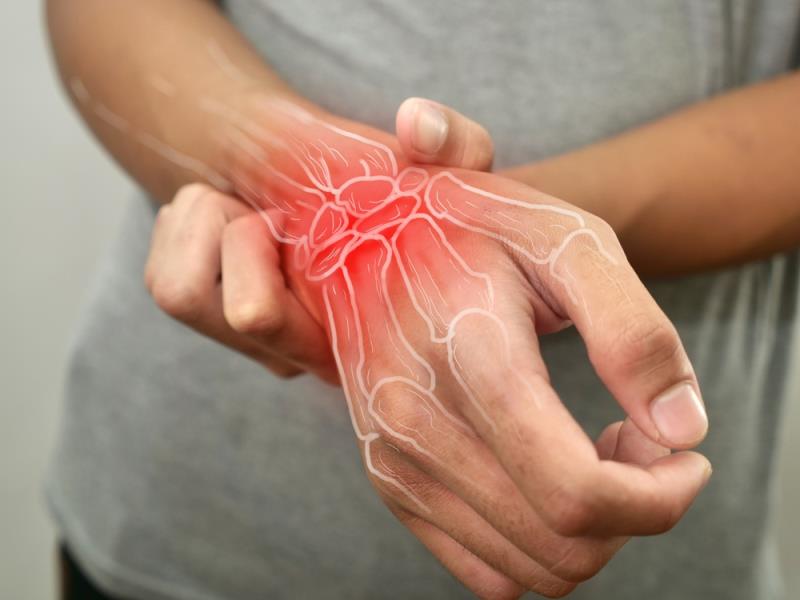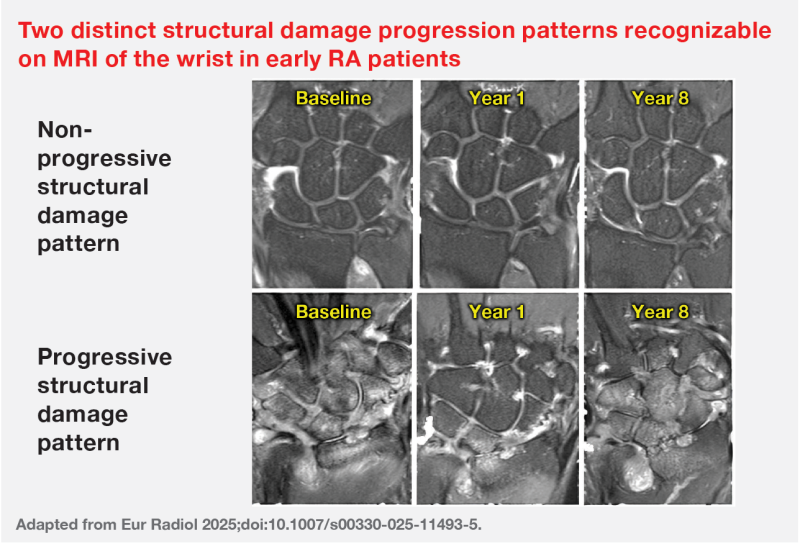MRI better at predicting long-term structural damage in early RA





In patients with early rheumatoid arthritis (RA), baseline MRI of the wrist is better than clinical, serological, or radiographic assessment at predicting long-term structural damage, an 8-year longitudinal study by researchers from the Chinese University of Hong Kong (CUHK) has shown.
A total of 81 patients with early RA (with symptom duration ≤24 months) were followed for 8 years to determine long-term changes in inflammatory and structural parameters while on standard treatment, and to investigate which baseline parameter best predicts long-term structural damage. [Eur Radiol 2025;doi:10.1007/s00330-025-11493-5]
The patients, recruited from a rheumatology clinic, were treated to target according to a prespecified protocol aiming at remission. Clinical and serological assessments, standard radiography of both hands and wrists, and dynamic contrast-enhanced MRI of the most symptomatic wrist were performed at baseline, year 1, and year 8.
“Previous longitudinal MRI-based studies of early RA patients followed patients for no longer than 2 years. We are the first group to follow early RA patients with MRI for 8 years,” said corresponding author, Professor James Griffith of the Department of Imaging and Interventional Radiology, CUHK, who conducted the study with Professor Lai-Shan Tam of the Department of Medicine and Therapeutics, CUHK.
Over the 8-year study period, clinical and serological inflammatory parameters continued to improve, while MRI-based inflammatory parameters improved between baseline and year 1, and slightly deteriorated between year 1 and year 8.
Two distinct structural damage progression patterns
“The most notable finding of this study was the recognition on MRI of two distinct [long-term] structural damage subgroups,” reported the researchers.

About two-thirds of the early RA patients had a non-progressive structural damage pattern. All patients in this subgroup had little or no structural damage at baseline, and continued to have little or no structural damage by year 8.
The remaining one-third of early RA patients had a progressive structural damage pattern. In this subgroup, 77 percent of patients had moderate-to-severe structural damage at baseline, which continued to deteriorate over 8 years, while 23 precent had no to mild structural damage at baseline but significantly deteriorated during follow-up.
Functional impairment at 8 years was twice as common in patients with progressive vs non-progressive structural damage (48 vs 22 percent), while functional impairment score was twice as severe (0.6 vs 0.3).
Baseline MRI better predicts long-term structural damage
Only baseline MRI parameters, but not clinical, serological or radiographic parameters, were helpful in predicting structural damage progression at 8 years. Baseline MRI bone erosion score was the best predictor (area under the curve [AUC]=0.81), followed by bone marrow oedema (AUC=0.77).
Based on results of this study, the researchers recommended routine MRI at baseline for early RA patients to identify those with existing structural damage indicative of a progressive pattern. “The presence of two distinct structural damage groups suggests a need for two different treatment regimens and [different] treatment targets,” they pointed out.
“Moderate-to-severe structural damage was present even at baseline in most patients with a progressive structural damage pattern, indicating that these patients are currently being identified too late,” they added.